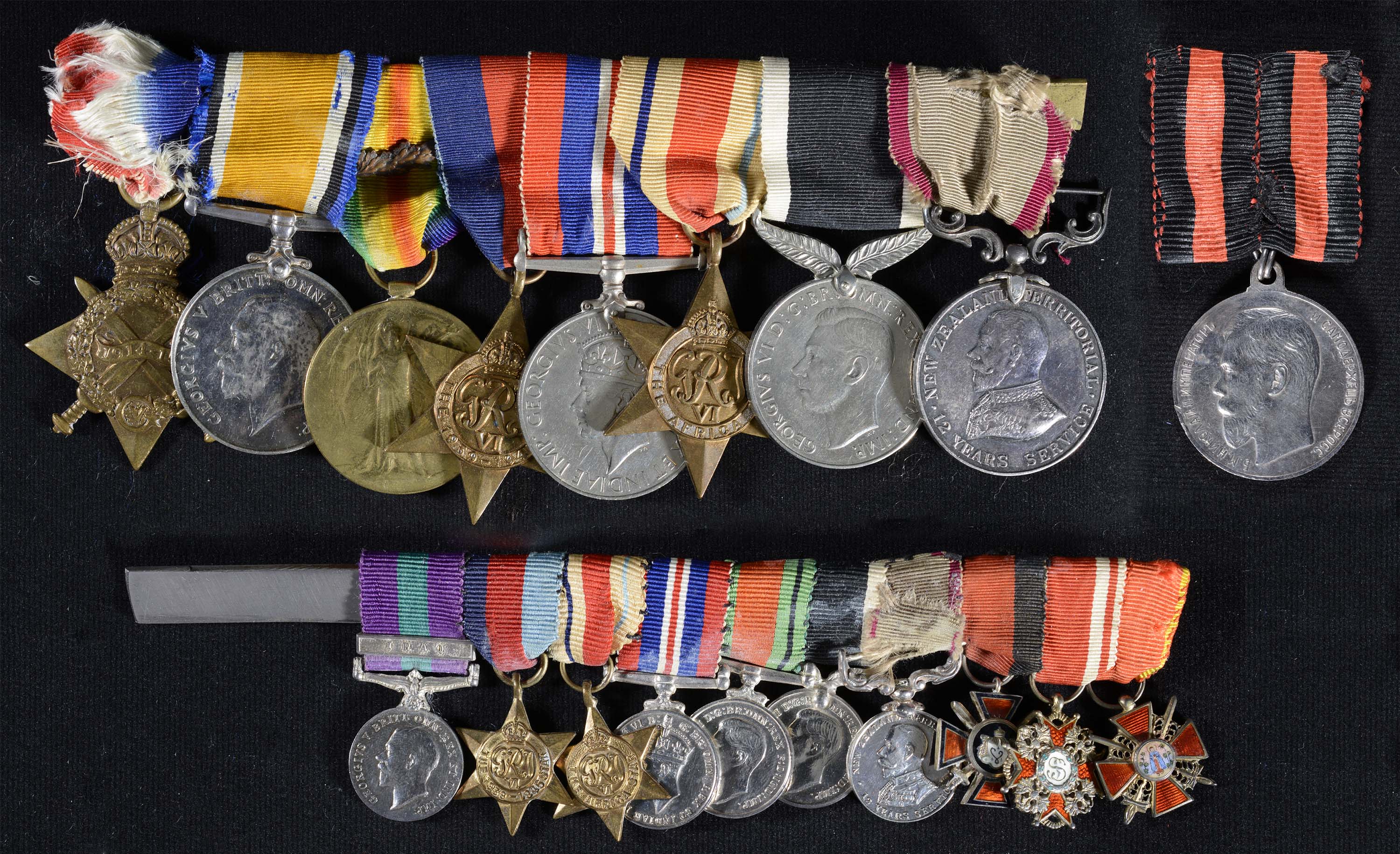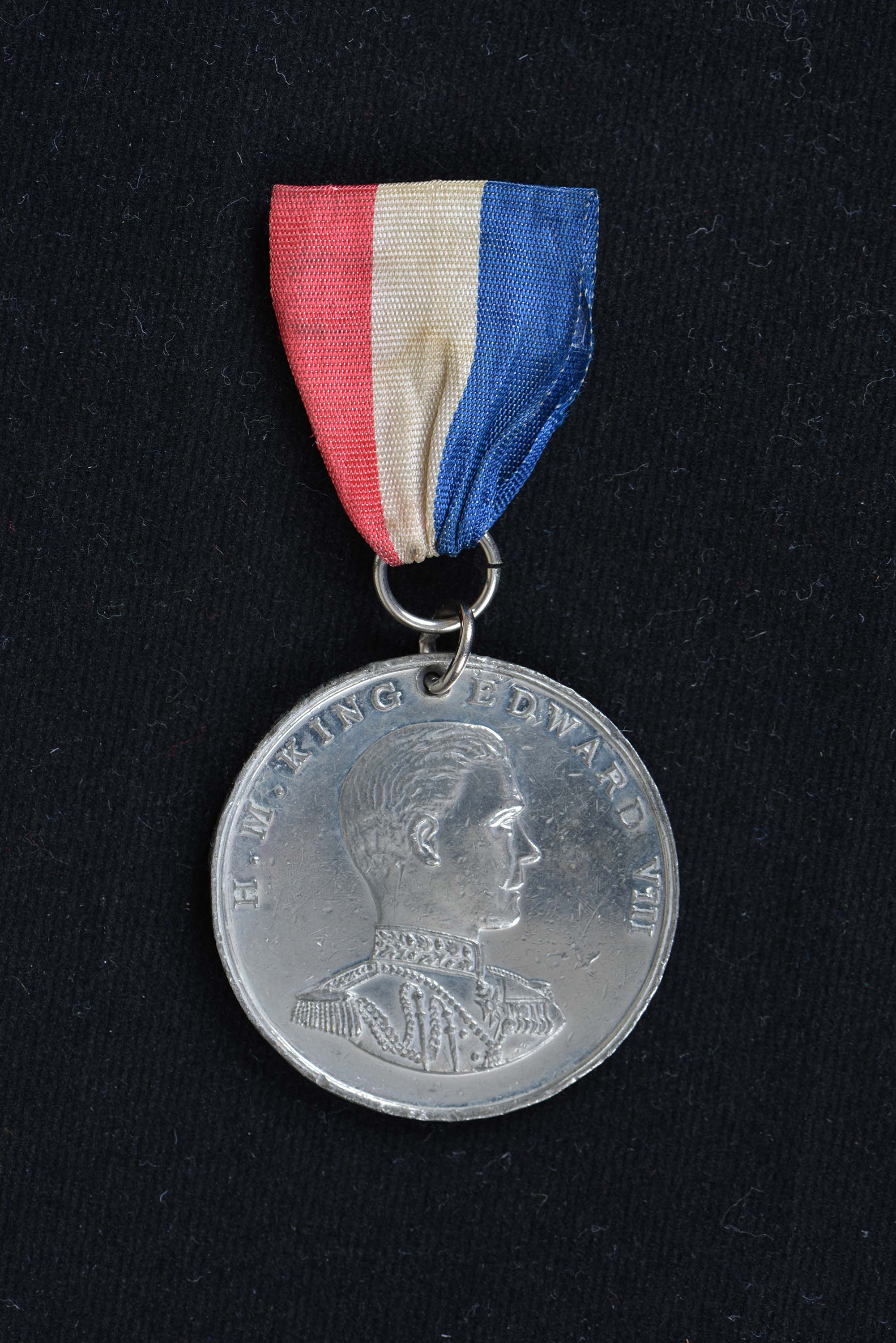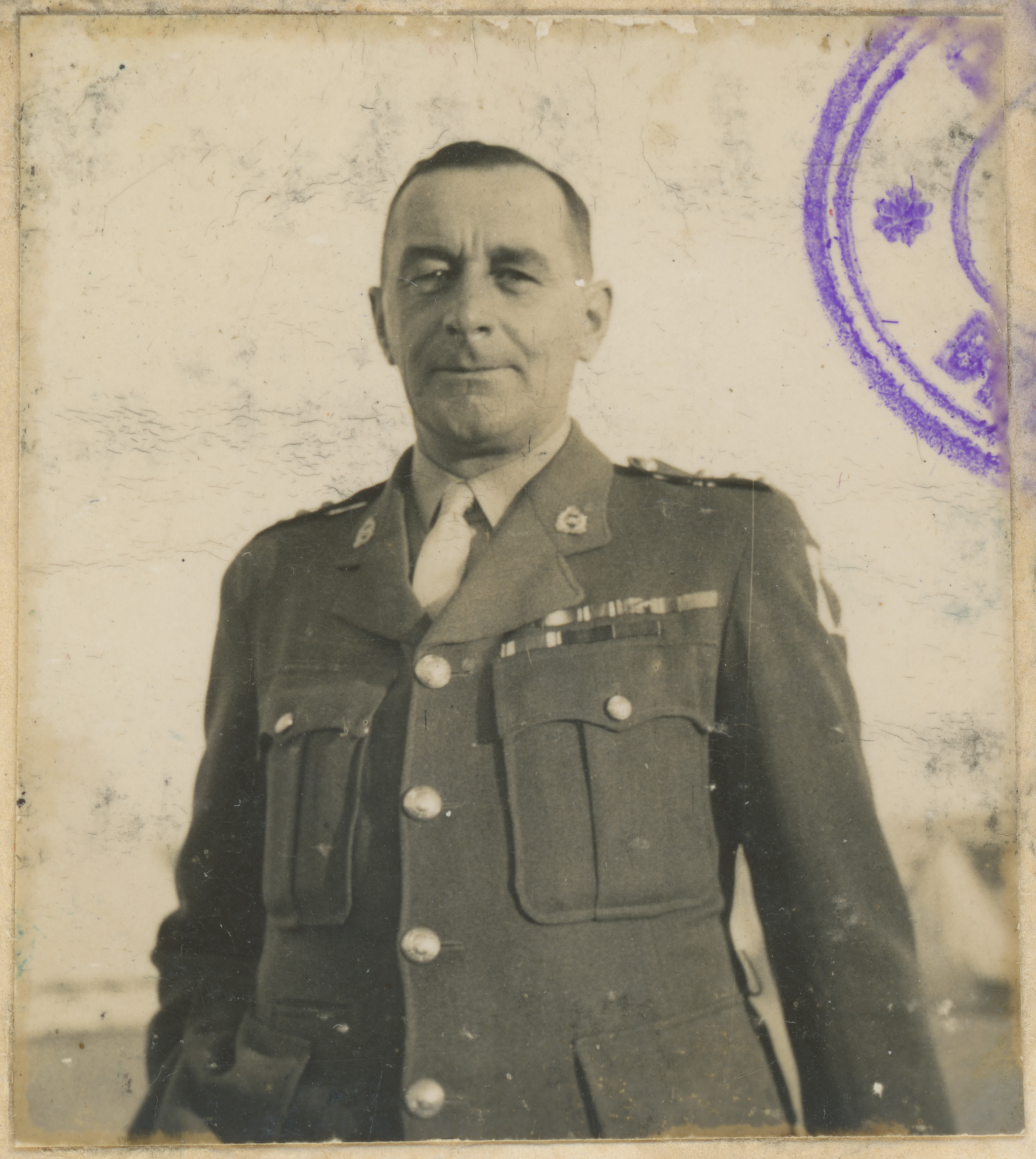

Display No. 7A
WOODS, Basil Arthur Naden
Basil Woods first enrolled in military service in 1911. He joined the Auckland Mounted Rifle Regiment of the New Zealand Expeditionary Force at the outbreak of the First World War. He saw action at Gallipoli and was badly wounded in August 1915. He was subsequently invalided to England. On discharge from hospital in July 1916, Woods took up a commission in the Royal Naval Armoured Car Division (RNACD), at the time part of the Royal Naval Air Service (RNAS). He served in Russia and Romania and was decorated by the Russian Government with gallantry medals for his service there. By 1918, the RNACD was transferred to the Army’s Motor Branch of the Machine Gun Corps. Woods continued to serve with them in Mesopotamia and Persia. He was a member of the special garrison in Persia until 1920. Woods then returned to New Zealand and worked as a commercial traveller.
At the outbreak of Second World War, he again volunteered for service in the New Zealand Army. He was posted overseas with the First Echelon of the Second New Zealand Expeditionary Force in 1940 and saw action in Egypt and Greece. In 1941 he was invalided to New Zealand and discharged.
Note: The medals here are displayed in the order in which they were donated to the museum, representing how they were worn by their recipients. In this case, some of Woods’ full size medals are not represented in his miniatures and vice versa. Another issue here is that his full size War Medal 1939-1945 is mounted incorrectly and should be placed after his Africa Star.
Awarded medal(s)
Medal Description [Order of Wear]:
The 1914-1915 Star
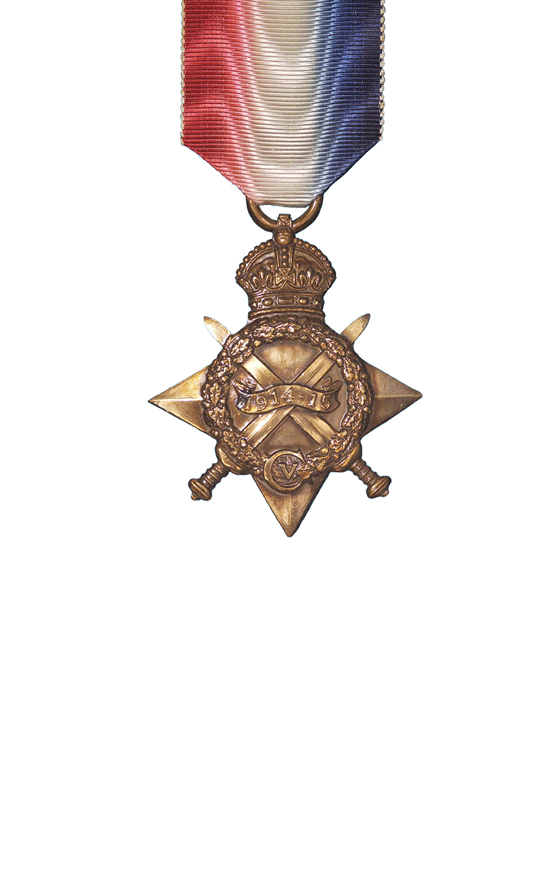
The 1914-15 Star was awarded to servicemen and servicewomen who served in the First World War between 5 August 1914 and 31 December 1915 in any “theatre of war”, provided they had not qualified for the 1914 Star. This included service at Gallipoli between 25 April 1915 and 31 December 1915, service in Egypt between 5 November 1914 and 31 December 1915, and service during the capture of German Samoa on 29 August 1914. Those eligible for the medal must have “served on the establishment of a unit in a theatre of war” during the relevant dates of operations in that area. The ribbon’s red, white and blue shaded and watered bands represent the flag of the United Kingdom.
The British War Medal
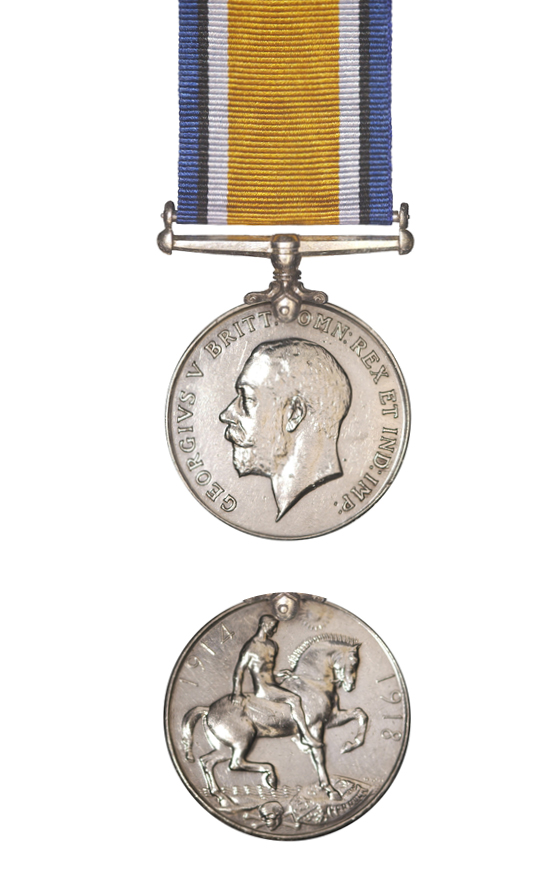
The British War Medal was instituted in 1919 to recognise the successful conclusion of the First World War (1914-1918). Its coverage was later extended to recognise service until 1920, recognising mine clearing operations at sea, and participation in operations in North and South Russia, the eastern Baltic, Siberia, the Black Sea and the Caspian Sea.
The Victory Medal
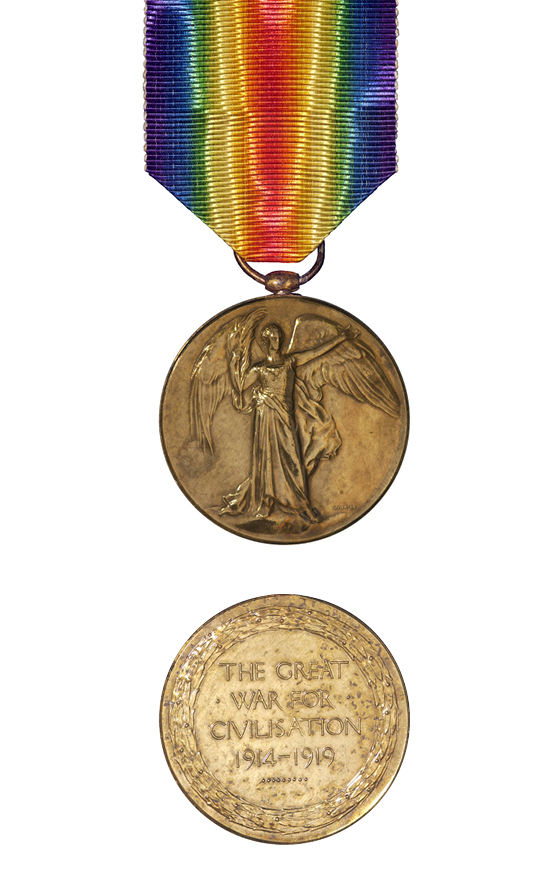
The Victory Medal was awarded in the First World War to all those who had already qualified for the 1914 Star or the 1914-15 Star, and to most persons who had already qualified for the British War Medal. The Victory Medal was awarded to all New Zealand troops serving overseas, except for those who arrived in Samoa after 30 August 1914 and those serving in Great Britain only. It has a unique double rainbow ribbon.
A bronze spray of oak leaves on the medal ribbon denotes that the recipient was Mentioned in Despatches during the period that the medal recognises. To be Mentioned in Despatches a member of the armed forces has had their name mentioned in an official report, written by a superior officer, and sent to a higher command. The report would describe the individual’s gallant or meritorious action in the face of the enemy.
The General Service Medal 1918-1962
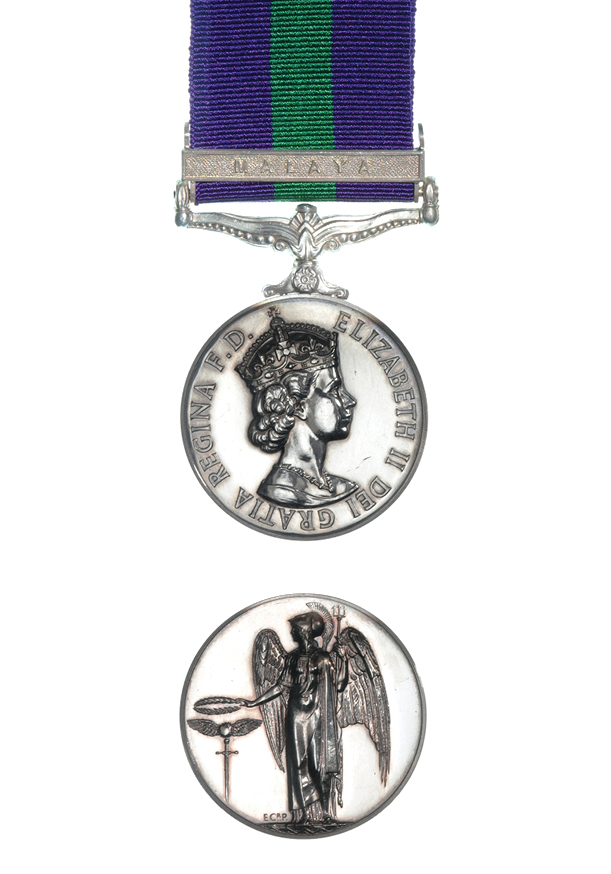
The General Service Medal (GSM) 1918 – 62 was instituted in 1918, to recognise service in minor Army and Air Force operations for which no separate medal was intended.
The 1939-1945 Star
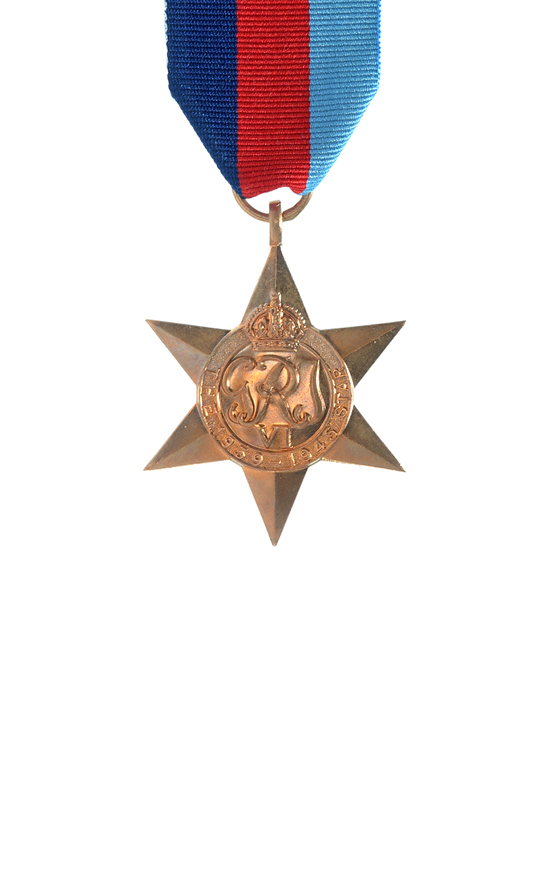
The 1939-45 Star is the first in a series of eight campaign stars instituted in 1945 to recognise service in World War Two. The ribbon has three equal vertical stripes of dark blue, red and light blue. The dark blue stripe symbolises the service of the Navy and the Merchant Navy, the red stripe symbolises the service of the Army, and the light blue stripe symbolises the service of the Air Force. The equal width bands represent the equal contributions of the three service arms towards victory. The ribbon was devised by King George VI. Two clasps could be awarded with this medal: ‘Battle of Britain’ and ‘Bomber Command’. Only aircrew would qualify for these clasps although a small number of Fleet Air Arm naval pilots flew for the air force and would be eligible for the ‘Battle of Britain’ clasp.
The Africa Star
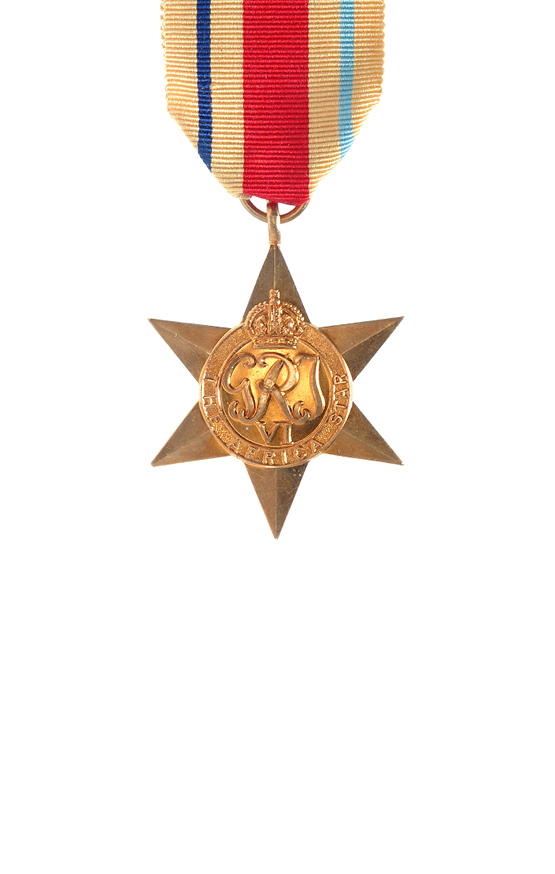
The Africa Star was awarded in the Second World War for service in North Africa between 10 June 1940 and 12 May 1943. The ribbon is pale buff in colour, with a central vertical red stripe, and narrower stripes, one dark blue and the other light blue. The pale buff background symbolises the desert, the central red stripe symbolises the Army, the dark blue stripe symbolises the Navy and Merchant Navy, and the light blue stripe symbolises the Air Force. Three clasps could be awarded with this medal: ‘North Africa 1942-43’, ‘8th Army’, and ‘1st Army’. Naval personnel could only qualify for the ‘North Africa 1942-43’ clasp – for in shore service.
The Defence Medal
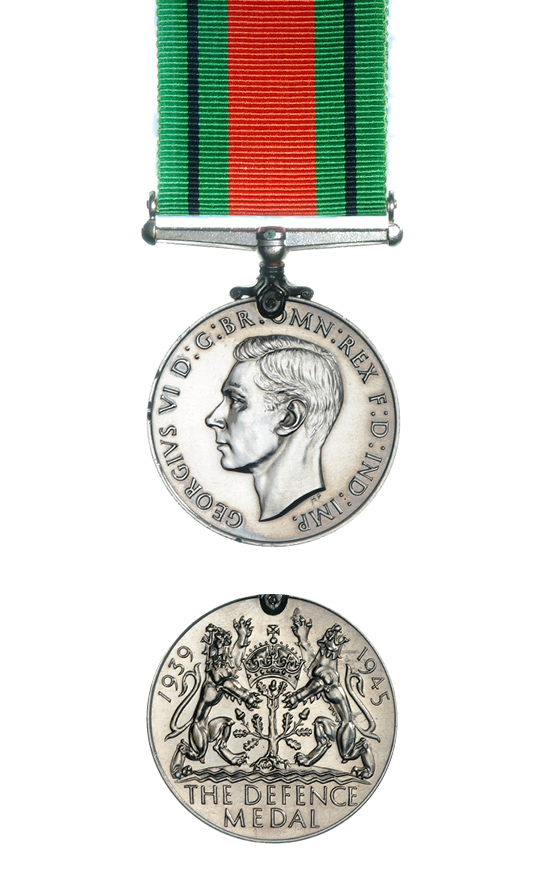
The Defence Medal was awarded to British and Commonwealth forces who served during the Second World War. It was awarded to New Zealand military personnel who served overseas in a non-operational area such as Great Britain, Palestine or Fiji. The ribbon’s flame-coloured orange centre band and green edge bands symbolise enemy attacks on Britain’s green and pleasant land. The narrow black stripes represent the black-outs against enemy air-attacks.
The War Medal 1939-1945

The War Medal 1939-45 was awarded across the British Commonwealth to all full-time members of the Armed Forces in the Second World War for 28 days service between 3 September 1939 and 2 September 1945, irrespective of where they were serving. The ribbon is the red, white, and blue of the (British) Union Flag. There is a narrow central red stripe with a narrow white stripe on either side. There are broad red stripes at either edge, the two intervening stripes being blue.
A bronze oak leaf on the medal ribbon denotes that the recipient was Mentioned in Despatches. To be Mentioned in Despatches a member of the armed forces had their name mentioned in an official report, written by a superior officer, and sent to a higher command. The report would describe the individual’s gallant or meritorious action in the face of the enemy.
The New Zealand War Service Medal
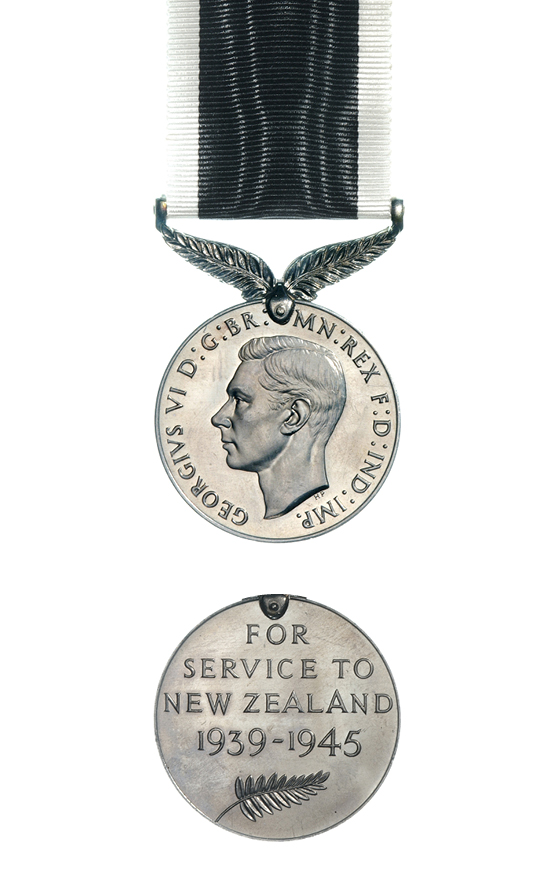
The New Zealand War Service Medal was awarded for 28 days’ full time service or six months’ part time service in the Second World War in any of the New Zealand Armed Forces including the Reserves, Naval Auxiliary Patrol Service, or Home Guard, between 3 September 1939 and 2 September 1945.
New Zealand Territorial Service Medal
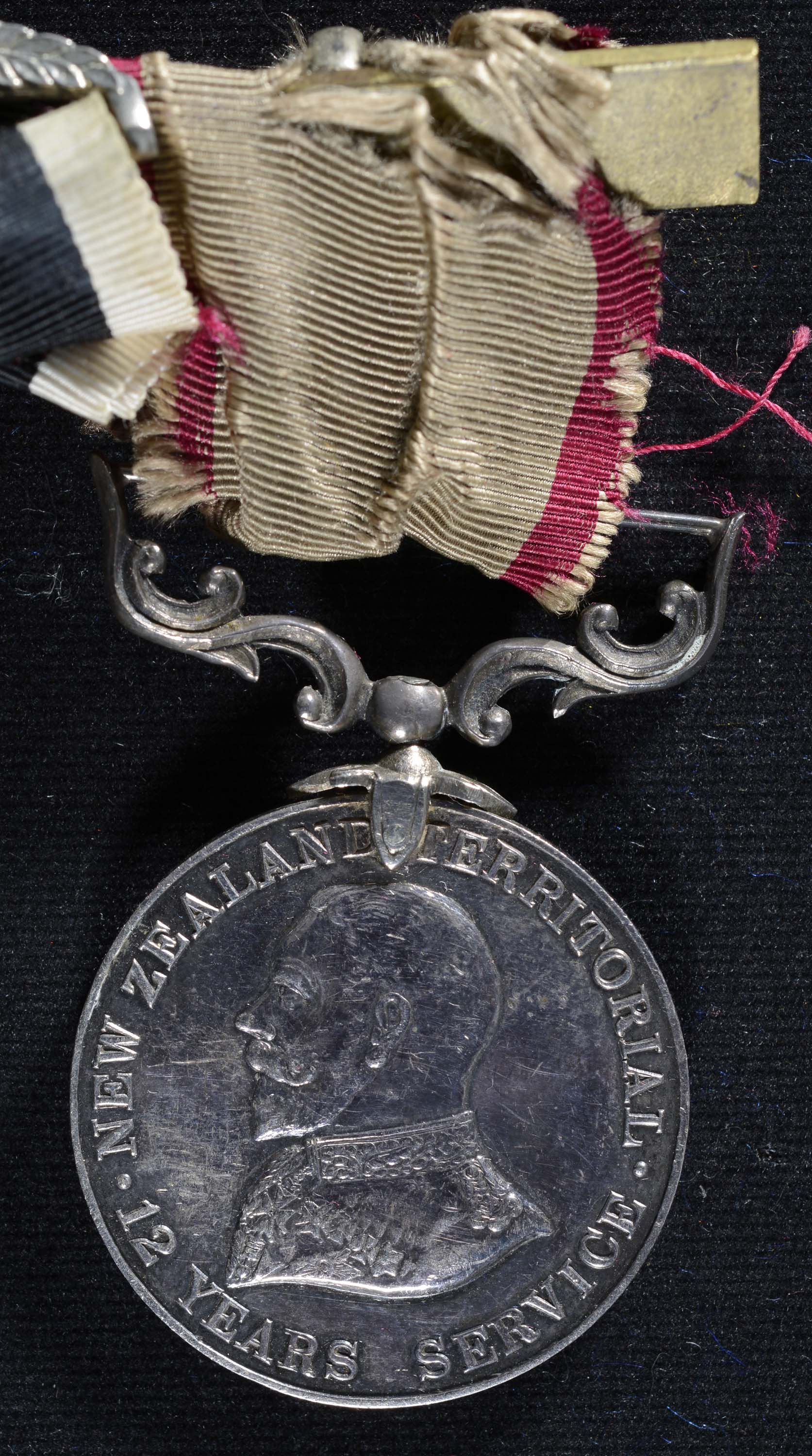
Instituted in 1911, it superseded The New Zealand Volunteer Service Medal. It was awarded to officers and other ranks of the New Zealand Territorial Forces upon completion of twelve years’ service.
Medal of St George

A Russian medal awarded for merit in combat. It was awarded in four classes. Gold medallions for 1st and 2nd class, silver medallions for 3rd and 4th. A bow on on the ribbon denoted 1st and 3rd class. The medal was awarded for merit to other allied soldiers, as well as Russians.
Order of St Vladimir
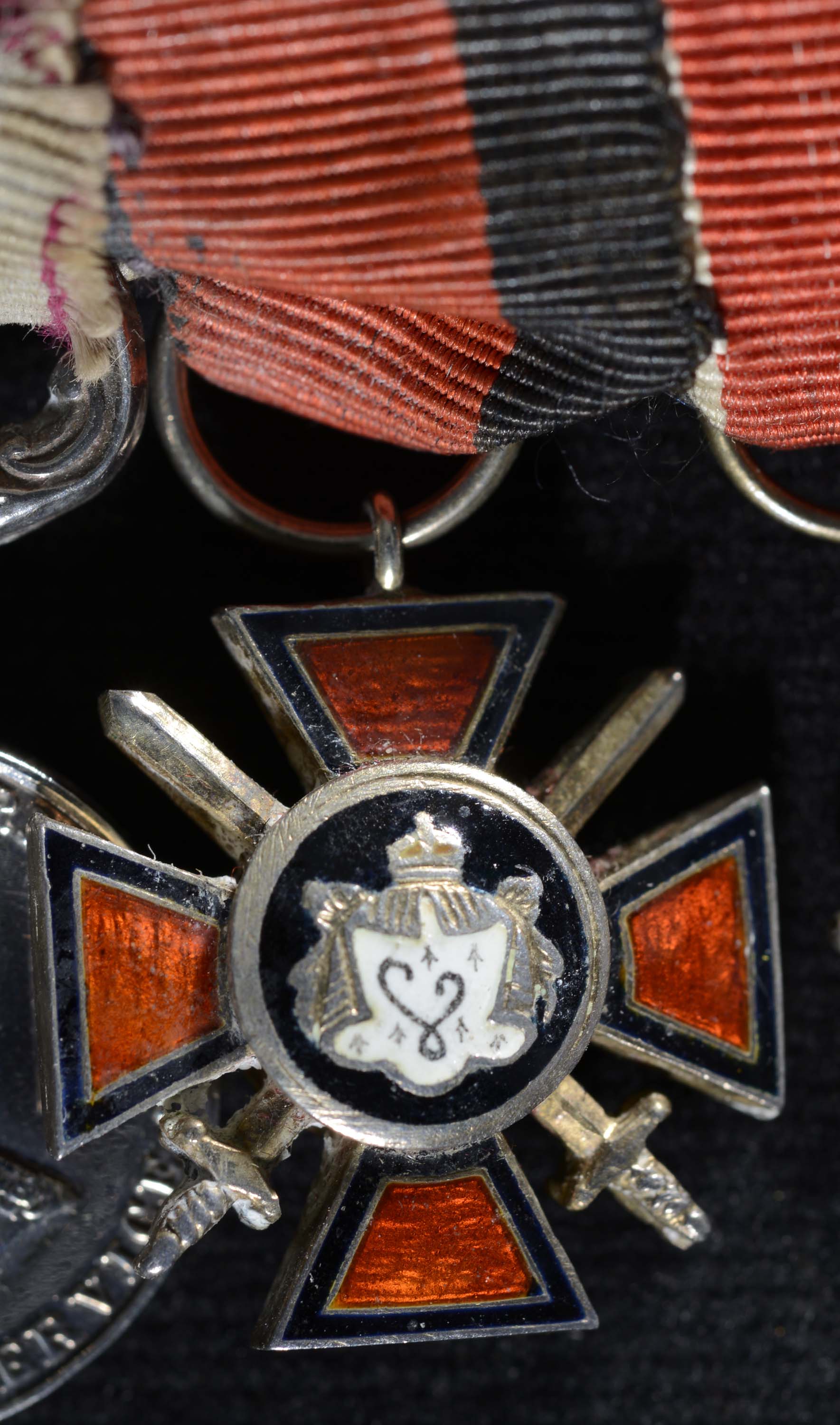
A Russian Imperial Award. It was awarded for continuous civil and military service.
Order of St Stanislaus
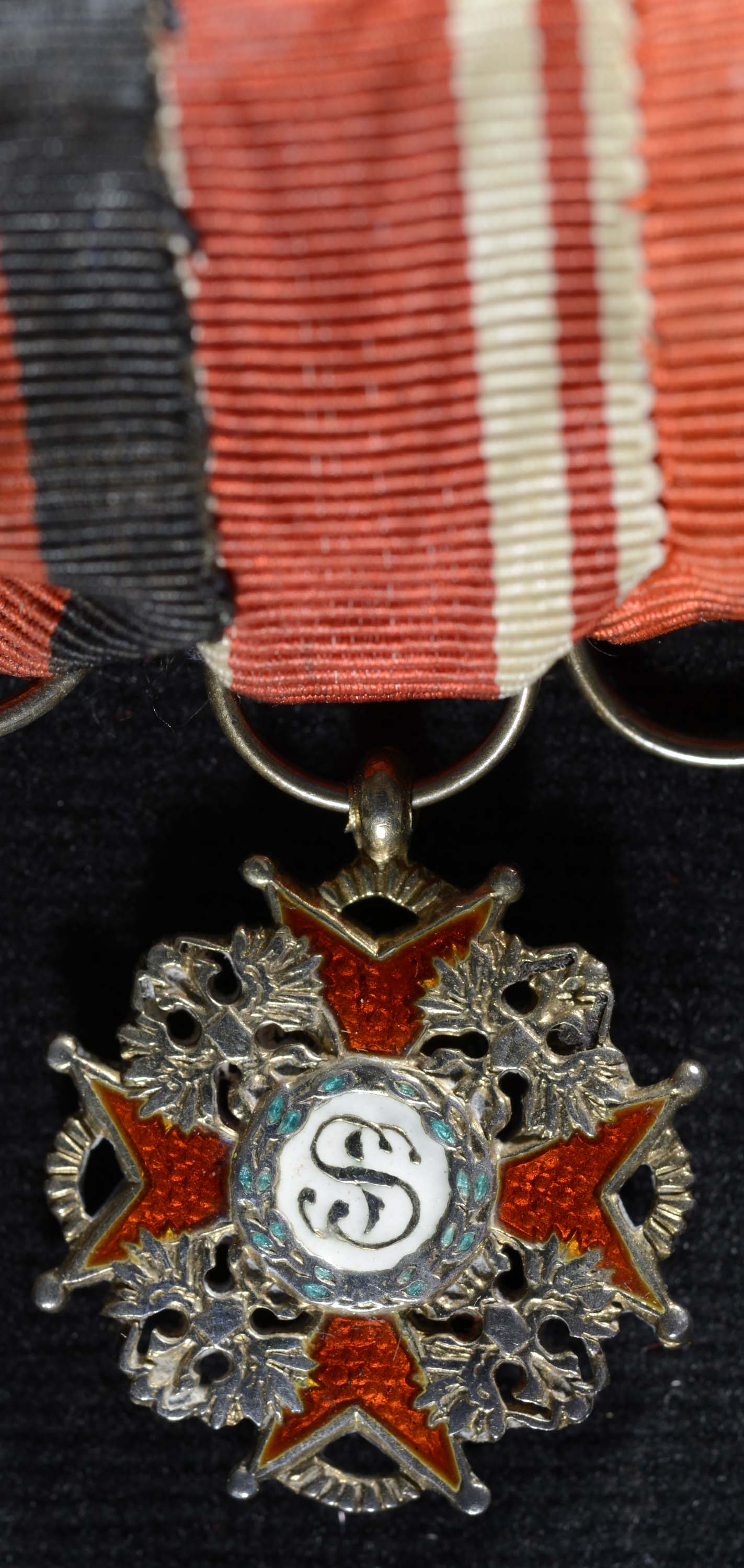
A Russian Imperial Order which depicts gold Russian double-headed imperial eagles, their wings partially overlapping the arms of the cross and the central medallion bearing the letters “SS” on a white enamel background surrounded by a green enamel laurel wreath. There is also a semi-circle of gold rays between each of the points of arms of the Maltese cross. Awarded from 1832-1917.
Order of St Anne
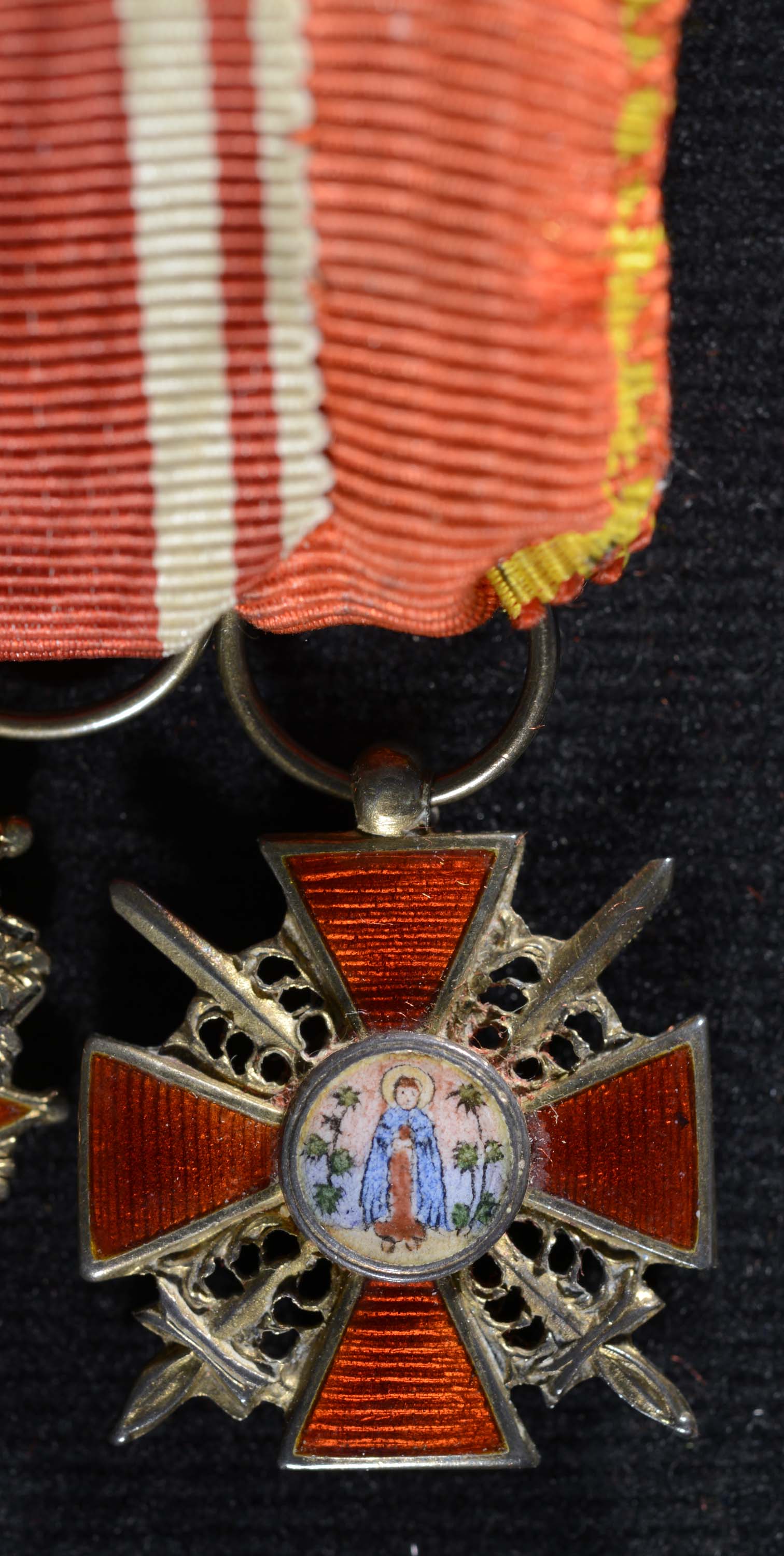
A Russian Imperial Award of chivalry, awarded for a distinguished career in civil service or valour and distinguished service in the military.
Special interest medal(s)
Display No. 26C
Commemorative Medallion for the Coronation of Edward VIII
Souvenir medallion to commemorate the coronation of Edward VIII scheduled for 12 May 1937. Edward was never crowned as he abdicated the throne in 1936.

